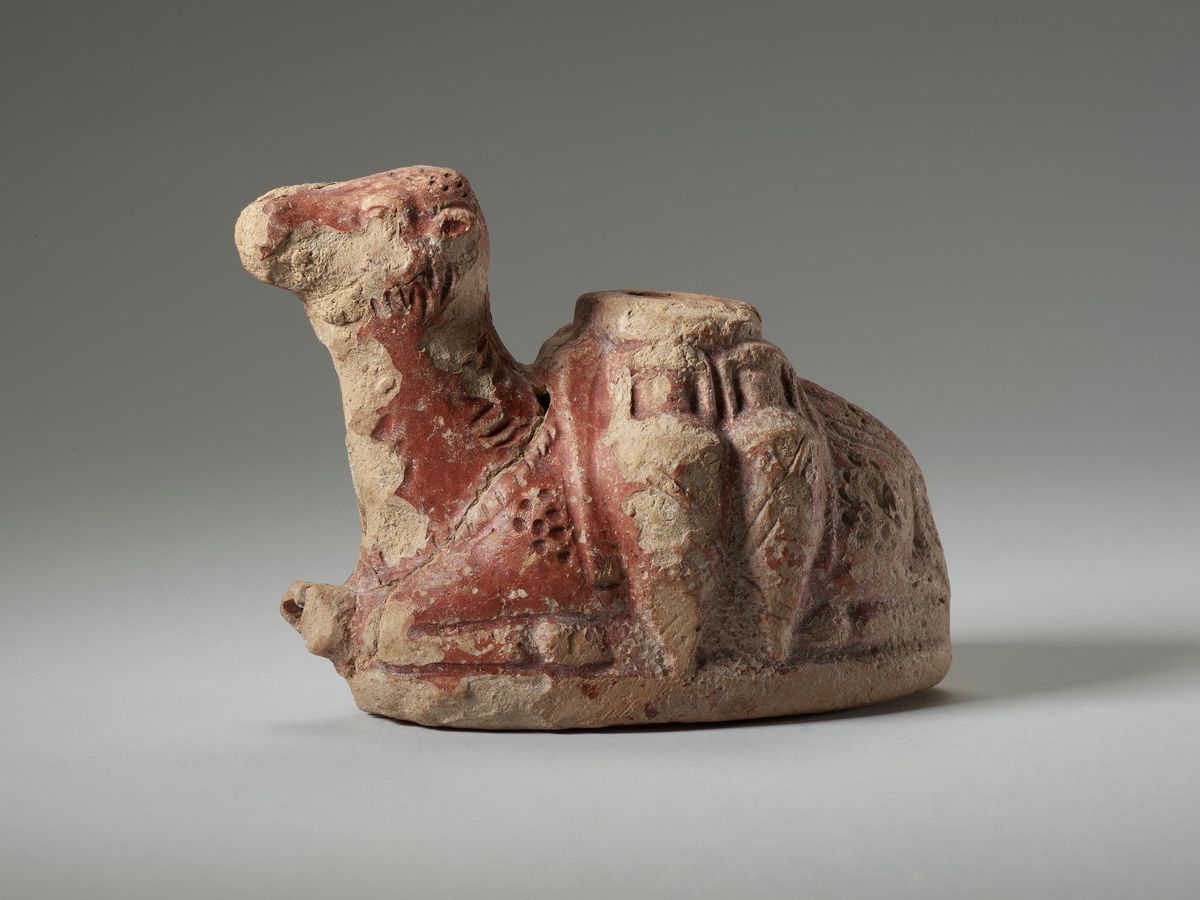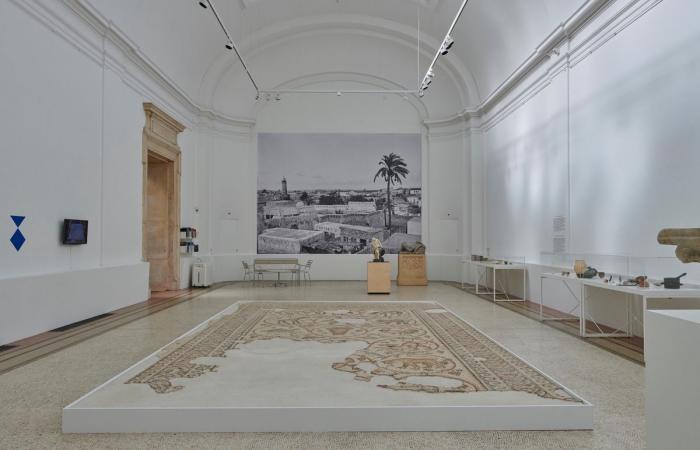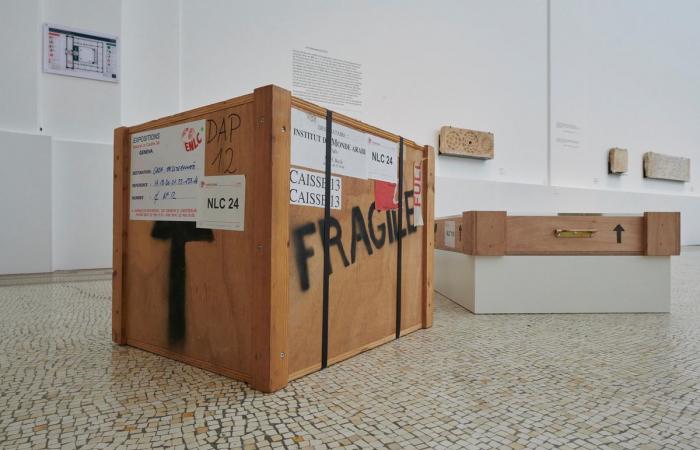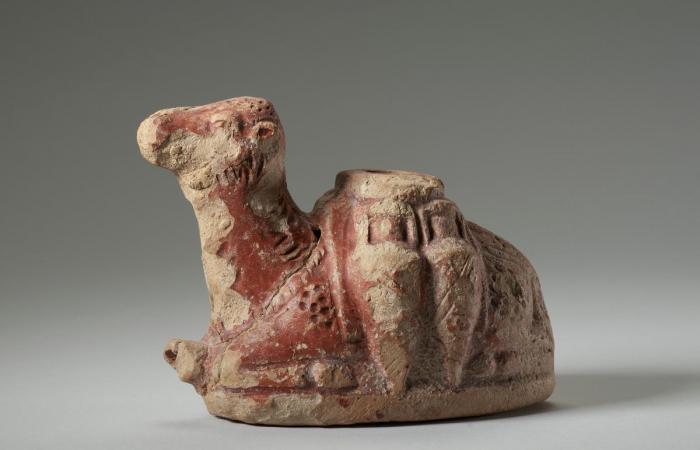– Remains of Gaza at the Museum of Art and History
The MAH marks 70 years of the Convention for the Protection of Cultural Property.
Published today at 7:46 a.m.
Aphrodite or Hecate with child Pan (disappeared). Hellenistic or Roman era. Coming from Gaza.
B. JACOT-DESCOMBES/PALESTINIAN NATIONAL AUTHORITY
Subscribe now and enjoy the audio playback feature.
BotTalk
Seventy years ago this year, around thirty countries signed the Convention for the Protection of Cultural Property in the Event of Armed Conflict in The Hague. Less than ten years had passed since the end of the Second World War, the cause of irreparable destruction. Entering into force in 1956, this convention did not receive the signature of Switzerland until 1962. It today brings together 136 states from around the world.
Even if Palestine is not on the list, its national authority did not wait for the recent devastating events affecting Gaza to protect its cultural property. Five hundred of them have not returned to Palestine since the exhibition “Gaza at the crossroads of civilizations”, inaugurated in 2007 at the MAH by the Palestinian president, Mahmoud Abbas.
The 70th anniversary of the 1954 convention offers the institution the opportunity to once again present around forty of these archaeological remains which await better days in crates at the Free Ports.
These objects form the bulk of the “Heritage in Danger” exhibition, which occupies a single room on the fine arts floor of the MAH. We were expecting something more important, but we had to make do with the Palestinian remains and a few small Geneva treasures, like coins, a 20th century sculpture.e century, damaged in 1987 in the fire at the Disarmament Pavilion, and the statue “Léda and the Swan” by Pradier.
This is there to explain the “PBC” concept (protection of cultural property), a strategy implemented in 2009 by the Administrative Council of the City of Geneva. This statue from 1851, made of six different precious materials, benefits from the “Blue Shield” because of its particular value. This label resulting from the “PBC” concept classifies it among the works to be saved as a priority in the event of danger. Same privilege for the collection of Geneva coins, certain pieces of which are exhibited.
Curator of this exhibition, Béatrice Blandin, curator of archeology at the MAH, has grouped objects from Palestine around the spectacular Byzantine mosaic which occupies the center of the room. It adorned the floor of a Christian church in a town in the Gaza Strip. This last city, once so rich in witnesses of the past, is also evoked by the very large format print of a photo taken more than a century ago. Displayed at the back of the room, this image shows in particular the minaret of the great mosque, now almost entirely destroyed by recent Israeli bombings.

In the foreground, the Byzantine mosaic of an ancient Christian church in Gaza.
B. JACOT-DESCOMBES/MAH
“I had seen this photo reproduced,” says Béatrice Blandin, “but it took a fortunate combination of circumstances for me to discover where the glass plate allowing it to be reproduced is located. A large plaque which was scanned for the occasion at the Biblical and Archaeological School of Jerusalem. It’s quite moving to see this very authentic aspect of a disappeared Gaza…”
Among the pieces belonging to the Palestinian National Authority, one bears witness in a unique way to the turbulent past of this corner of Mediterranean land. It is a column of Byzantine origin, found in the sand of the seaside, whose inscription engraved later indicates that it had been used as a funerary stele on the tomb of a British officer who died in 1917. We also see an antique capital subsequently dug to serve as a basin in a hammam.

A box of remains from Gaza like those stored at the Free Ports.
B. JACOT-DESCOMBES/MAH
Let us remember that Gaza was Greek then Roman, that it housed Christian monasteries in the Byzantine era, that the Crusaders and Muslims clashed there until the 12th century.e century. The Ottoman Empire, which seized it in 1517, lost it after the First World War. The British mandate over Palestine was followed in 1948 by the allocation of Gaza to the Palestinian state to be created. We know the rest…

Flask in the shape of a crouching camel, Byzantine period, VIe century.
B. JACOT-DESCOMBES/PALESTINIAN NATIONAL AUTHORITY
“Heritage in danger” at MAH until February 9, 2025. www.mahmah.ch
Did you find an error? Please report it to us.
0 comments










